Progress, And A Few Thoughts on Thresholds (Part II)
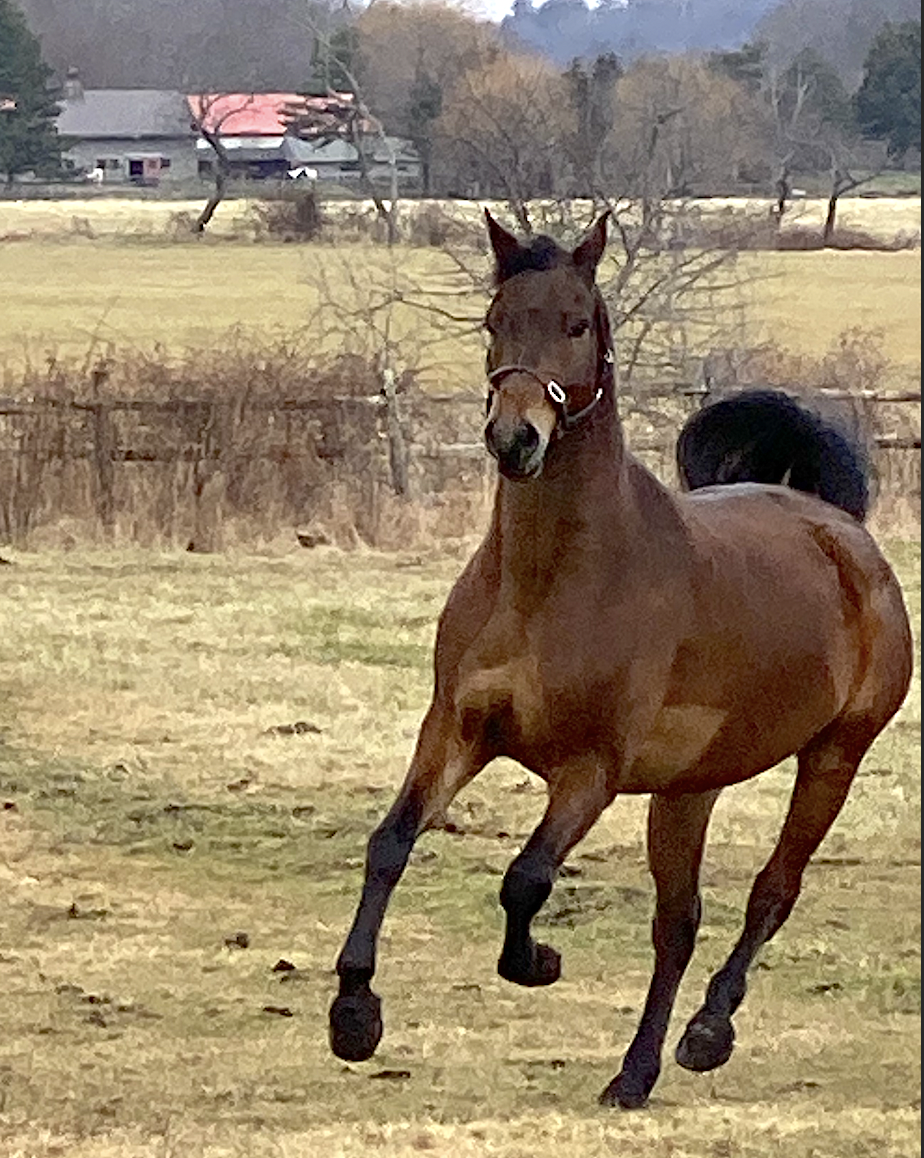
If 2024 had a keyword already, it would be education. Part of the reason why it's taken me so long to fill in part two of this series on thresholds in training is that I am literally learning something so profound on this topic every single day that it updates my previous knowledge to the point that whenever I have a moment to summarize, it's almost just obsolete. It feels very silly, but the mental drafts I carefully composed for this post have now been written dozens of times and all were discarded in the bin due to new information coming at us so fast that I almost can't keep up with it. As case in point, Levi seems to be in on to this in some way, and has lately provided me literal evidence of what I hope to describe here. Thankfully, I've managed to capture some of it on video to share with you. Another reason that education is the name of the game for this year is that since December I've been working with a wonderful driving instructor and their incredible pony, with whom I have been taking weekly lessons. Having spent all of 2023 without a regular trainer or instructor, in contrast, I have already learned so much and value this teaching so highly. Levi is also learning with me, as always; school is never out of session for him. This year, we will focus on building and conditioning under cart. We will also show in hand and, toward the last half of the year, under cart as well. I will share our developing plans for the upcoming show season very soon.
Before we leap into the topic of thresholds, I want to share a recap of what we've been up to recently, considering this long hiatus, and summarize our 2023 and what we learned. While my work life is kicking butt and keeping me juggling everything with my training plans under cart (including posting more timely updates here), Levi recently experienced a literal butt-kicking, as in the last week of December he presented me with a grapefruit-sized hematoma on his right booty cheek, just above the hamstring. He wasn't lame and was in pain only when the site was palpated deeply; his vet believed it to be the result of a good kick, given its location and size, and apparently it's quite a common occurrence for horses in both the location and type of injury. As Levi often pushes other horses to the brink of their patience, it is likely that he deserved this giant water balloon of a bruise, so let it be a lesson to him to be more of a good neighbor. The treatment of a hematoma (a huge blood bruise, basically) is rather mundane - rest, watch, and monitor - no steroids, pain medications, or other interventions are warranted unless it grows suddenly, affects movement, or seems to not resolve in an expected timeframe. Lancing it and draining it could actually worsen the wound as it could be a result of capillary damage and therefore increase the bleeding that the inherent pressure of the contained wound would mitigate. Due to the location of this beast right where his breeching would engage, I decided we would halt all work under cart and most work in harness until it resolved. Bummer for us, but Levi has earned himself a six week long break, although not entirely off from training as we have kept up our ground work and even broadened our horizons a bit, albeit with no work under cart. Some movement and light work is helpful to mobilize the fluid that is stubborn to drain in that area of his body, and we did observe our vet's advice for full rest for a couple of weeks, but did resume ground work which really helped him resorb the rest of the fluid. I am happy to report that as of last week, the hematoma is completely resolved and there is no scar tissue, fortunately. Now that we are back, we will put Levi back into work with the cart next week, for very short drives until he's built up some strength in his pulling muscles again.
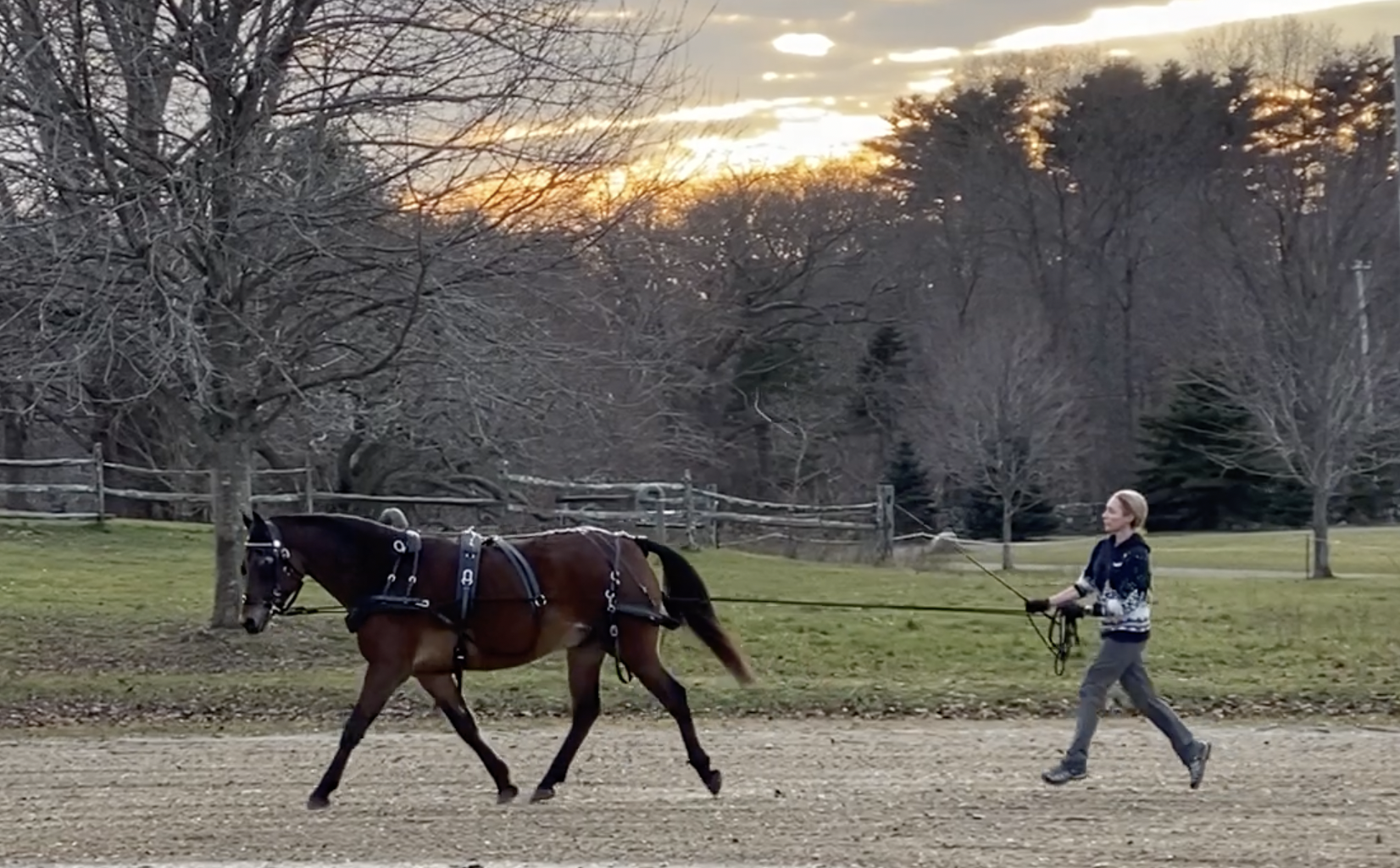
Before this happened, in November and December, we were working on one major issue that had arisen under cart. Levi has been an absolute gem under cart, but over several sessions, I have noticed he is struggling with his bending and turning to the right. Turning to the left is almost perfection; the right has a few issues. This seems like it has always been the case for him, though not nearly as dramatic, and translating what we have done on the ground to the cart, despite thoughtful and thorough preparation and work with various drags, etc., is still not entirely clear to him. If you think about the great rift from groundwork to pulling a cart, it makes sense he would feel this way, even with such careful preparation.
To help him, I wanted to put him back into some calm long-lining and ground driving turns and circles to strengthen his weaker right side. His hematoma injury that would prevent us from working under cart was the perfect opportunity to work on this as it did not affect his movement and he wasn't in any pain at walk or trot or during transitions. Levi is stronger on his left side, which is also stiffer. During a normal right turn in the arena when pulling the weight of the cart, at speeds greater than a walk he gets kind of nervous because he worries about losing his balance, which causes him to anticipate, stiffen, and start to counterbend, moving his nose to the left (trying to see with the right eye, probably, despite wearing blinders) and attempting to throw his weight over that right shoulder. I have seen, and ridden and driven, other horses doing this all the time, and it is a very common occurrence in and out of the show ring. He does not do this every time, but he does struggle with it enough (perhaps one out of every five or six turns to the right) that I feel we really need to work on this right now to prevent any bad habits from truly taking hold within the musculoskeletal system. We have at our disposal a deep body of literature and multiple exercises to help overcome this, that many other drivers have helped develop. We have excellent advice from trainers and judges at our fingertips. I was delighted to discover that this is so common for young horses at this stage of training, most of whom are traveling very well to the left and find the right to be more challenging since this is largely how they cope with life, that I felt much better and realized we could gently overcome this with time and training. In other words, he can grow out of it, if he is properly prepared. If you have a young horse that does this - take heart, it is normal, hone in on helping him through proper biomechanically-focused training, and trust that he is on the right path.
I found a wonderful driving exercise that focuses on helping the horse accept the role of the outside rein and understand that this rein will switch based on what the driver is asking and the position of the body/what is being asked of the horse. It seems like focusing on this is minor and would not address the balance and counterbending issue, yet it really does! For them, the outside rein is not always going to be just the left or the right; they need to pay attention and think about where and how they are being asked to travel using these aids. In this sense, it is also an important mental exercise for them that prepares them for focusing as driving horses. The young horse can become open and accepting of the solid contact on outside rein as the guiding rein, while understanding that a small release of the inside rein will help facilitate the turn and the two combined along with the whip for guidance will help his body balance in that turn. He can look to your hands for help. He may understand and respond beautifully on the ground, but under cart it becomes another matter for him because now we have moved up a level in the game. Depending on the horse, he may have more or fewer questions about this level. Levi questions everything and is going to do his best to jailbreak every level (I'm not kidding). This is right where we are, currently. Levi has a lot of questions and I am trying to answer them as fast as they are asked. The author of the exercise that has helped us is the trainer Andy Marcoux (link to this exercise here: https://coachmansdelight.com/course/the-outside-rein-4/) whose blog Coachman's Delight has been an invaluable library for Levi and I as we navigate our early days under cart. After working with this rather challenging exercise several times, both under cart and on the ground, I feel we are really helping Levi obtain greater strength and suppleness to facilitate lateral and longitudinal bend, which are so important for balanced and comfortable work under cart. This exercise also really relaxes him because he begins to realize where he can stretch and when he needs to coil; there is a transitional point as the curve yields into straightness that allows the horse to flex downward, seek out the contact, and the driver then slowly takes back that contact to help the horse collect more through the turn. I really feel that I can't describe more of this particular exercise without violating Andy's intellectual property, so if you are interested, please do purchase the PDF and video because it will really help you and your horse, if you are interested in generating bend and suppleness under cart, or your horse has challenges in accepting the role of the outside rein.
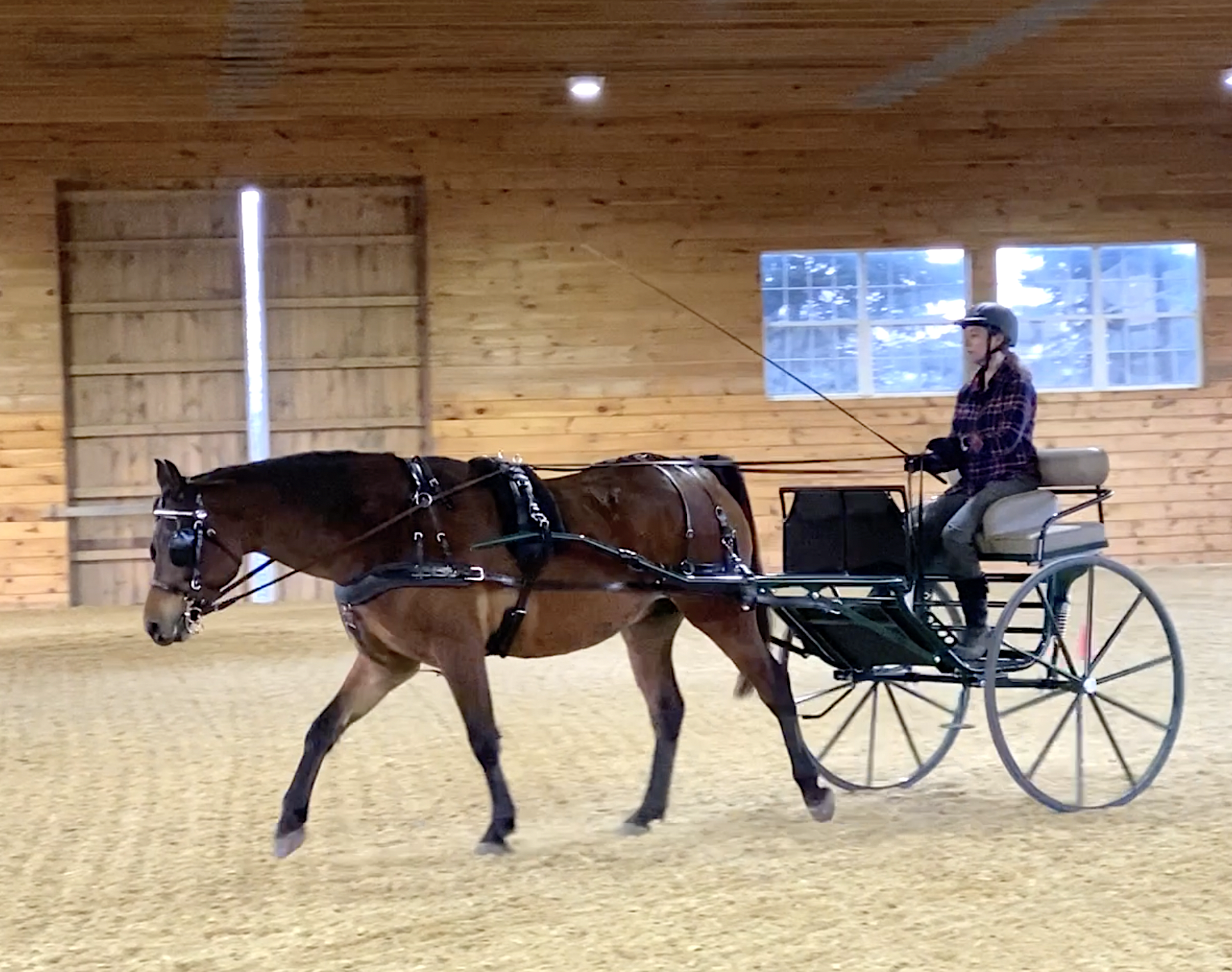
In looking back over 2023, I think it was a milestone year for Levi and a remarkable year for my own growth in horsemanship. If we want to put some keywords on that year, in the first half of the year we would find resilience as well as competence. In moving Levi to another facility focused on natural horsemanship as a modality of raising and keeping horses (not necessarily in training, as all disciplines are welcome at this barn; natural refers to not only how these horses are kept but how they are handled in very gentle yet traditionally competent ways) in an environment that is designed to support their unique needs so that they can succeed in their training and other athletic endeavors with humans, we found ourselves instantly better equipped to work together as partners. At this barn, due to a focus of natural horsemanship practices that prioritize the well-being and respect of the horse in the entirety of his needs, including the need for harmony and peace, there is an absence of mistreatment of them, including shouting, slapping, hitting, using chains over the nose to control them, yelling at people, and similar stress. Horses are given access to forage every day and turn out until dusk each day. They have hay to last the night in their clean beds. Horses are kept in groups depending on how they prefer each another and the individual needs of each horse, both emotionally and physically, are of paramount concern to everyone. The lack of stress (only humans are allowed to worry!) means that the horse's mind can relax, focus, and learn. I trust everyone at this barn, and Levi knows this. We began to work on building resilience in every aspect of our training, from promoting more independence in Levi to finally introducing him to work under cart, the ultimate milestone, on his fourth birthday.We have the full footage of that event on this blog to share with you, if you wish to see that. I developed his 30 minute walking warmup due to this and it remains a cornerstone of the work we are doing to further build resilience. Through that warmup, we built up a killer walk for this horse that will probably win some ribbons in the future. This milestone work was also accomplished with the help of my husband Joe, a budding horseman who otherwise has no experience with horses but remains my groom in two ways as well as a future fantastic navigator, and our wonderfully supportive and informative barn manager (and accomplished driving and riding instructor and horse trainer!) Sam. We also have many of the barn staff members to thank as well as the barn owner; as I don't have their consent to share their names I will just mention that they are all phenomenal and I think they deserve all good things in the world. During the summer, we dealt with a number of setbacks related to the environment - something we could not have really accounted for - and we also introduced Levi to living in a herd situation while I navigated some disappointing phenomena related to other equestrians and their practices that showed me a clear dividing line regarding where my morals lie regarding performance with horses. Illusions about where I initially thought we wanted to go or would be welcomed were destroyed, and naive or ill-informed thoughts on my part were not given any chance to take root. In retrospect, I'm grateful for everything, although I could not have foreseen just how hard it would hit me on an emotional level. During the last half of the year, the keyword would be balance, as we found that Levi was trying to tell us something in regard to his body that needed to be addressed, and we adjusted the training in kind and found new wonderful information to help us going forward. The end of the year, in spite of the 'kick up the arse' that ol' Levi received, was spent with great joy and positivity, having winnowed out that which did not resonate or work well for us, and bringing in all new things that will challenge us in a positive way and help us rise. This year, I am immersed in my own education as well as Levi's; my hope is that by the end of 2024, Levi and I will have grown in our knowledgebase and athletic capability to the point that we are virtually unrecognizeable from today as a team. We have deepened our trust to the point that it this future reality is actually a possibility rather than a far-flung dream.
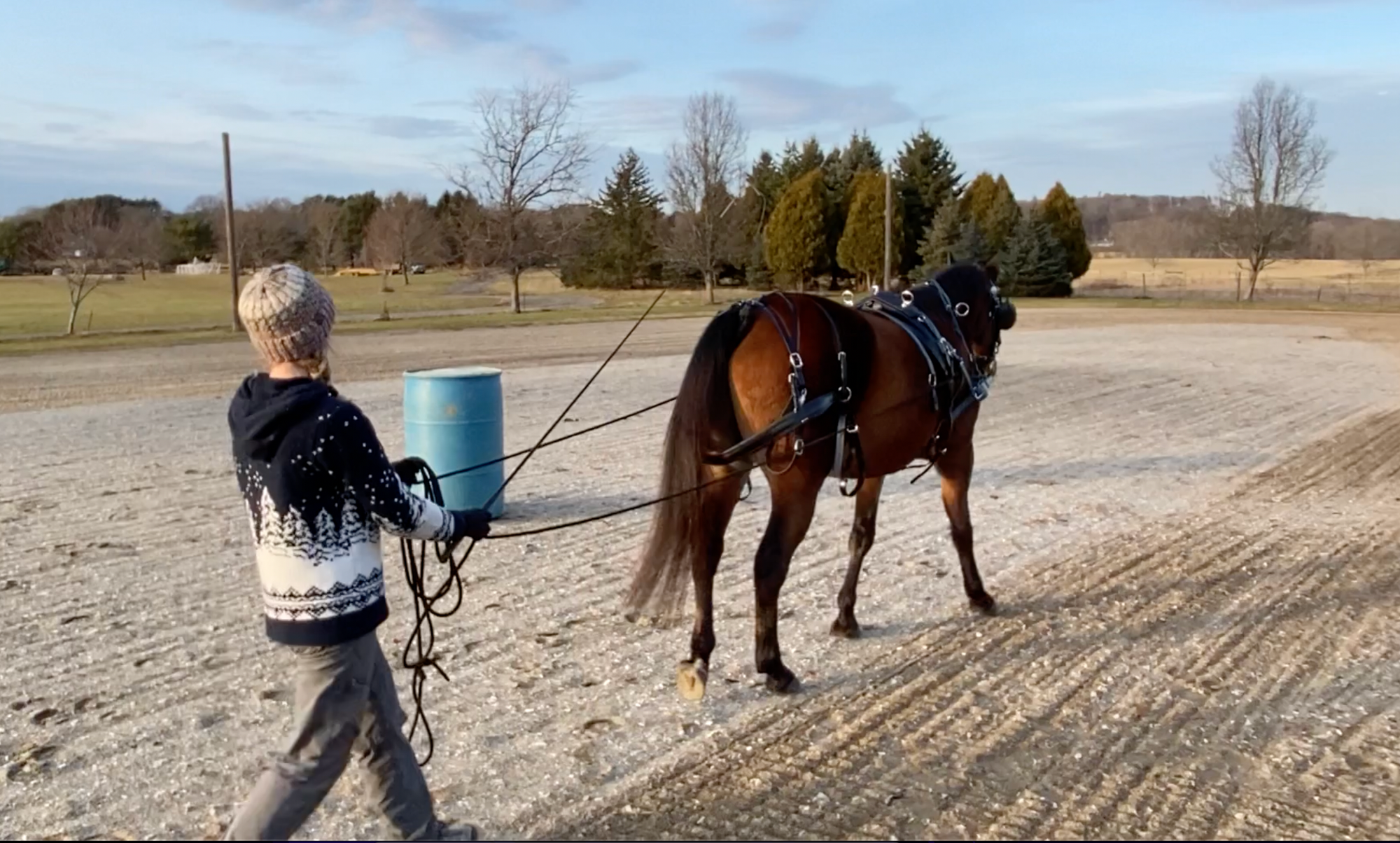
With the year recap wrapped, let's move on to right now:
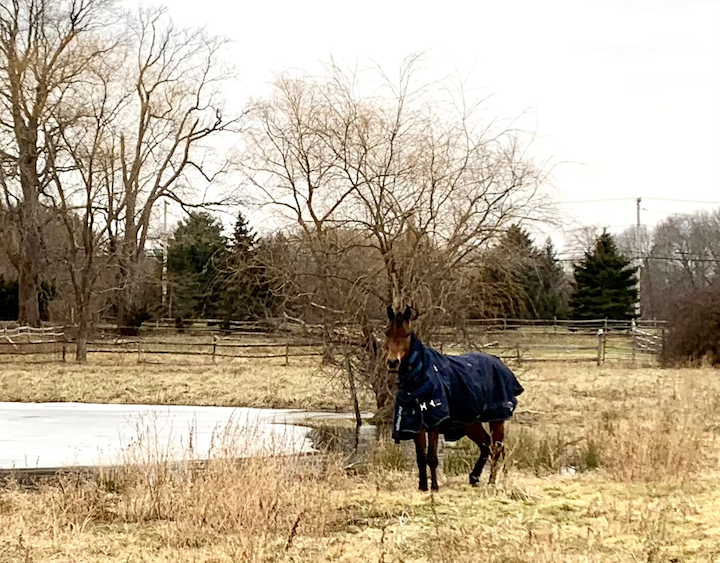
Observe this guy taking over this spot. What's going on here? Look at this jubilant soul obviously rejoicing in his creepy dead paddock. This is an equine middle finger, dealt by a horsey Houdini who has made it his mission to break into a piece of the property that was fenced off for very good reason, i.e. the safety and control of a little wetland, and who actually believes he has won the right to be on this decrepit spot of land. Why is this important, and how did this happen, and how in the hell does this relate to thresholds in training? When am I ever going to get to that? All great questions.
I've said before that what horses get up to on their own time tells you much about their individual character or nature. As an example, we observe Mozart and Anton, the classically trained Friesian dressage horses, often enjoying freestyling with the herd. Anton will send lesser herd members packing with the elegance of the haute école - can you feel, Kenergy - while Mozart will literally write you a love song with his canter out in the paddock and hopes you enjoyed the dead gothic flowers he left for you. Oliver and Karamo, the Appendix eventers and actual athletes of this farm, truly love only their beds and their mamas and they really don't want anything that doesn't bring them closer to those things. Ollie and Karamo will wait at the gate precisely at 3 PM to be brought inside, despite knowing it could be a couple of hours, with the hope someone will notice and they can go inside their stalls to eat hay and wait for mom or dad to show up so they can have a workout. Nice day? It doesn't matter. Levi, in contrast to his herd members, likes to get up close and personal with everybody and wants to know everything about everyone including people and dogs, and his tolerance for novelty rivals every horse I've ever seen. He is incredibly smart, but is affection-driven, food-driven, and novelty-driven, and he has an aversion to all kinds of boundaries, which makes him a natural escape artist when he is bored at pasture. His talent is finding and discovering everything he can about fence lines, gates, or other things keeping him from what he wants, and thwarting them. He also really loves getting long backrubs from his band of bros but equally enjoys taking himself out for gourmet foraging experiences in new territories, completely ignoring all boundaries in the way. And this is how Levi has come to occupy his own little swamp. (I will get to thresholds, I promise, hang in there.)
A while ago, the barn staff mentioned he was somehow getting into the paddock adjacent to the one he occupied with his herd, up on the hill. Initially we thought it was because the electric fence was weak, and he was somehow slipping underneath or in between the wires, which made no sense. There are three wires on the fence and it would not be easy or comfortable for an animal of his size to try to squeeze between or beneath them. The top wire is electrified. Up went the voltage to Jurassic Park levels; the next day Levi was found calmly grazing in this little forbidden area. The reason this part of the pasture was fenced off is that it is all flooded; it is mostly taken up by a pond with a wetland area and there is only a postage stamp sized space near the gate that is dry. It is currently mostly completely filled with about 3-12" of ice water in the grassy areas. I do not understand why Levi is so determined to be in this space, or why he is so fascinated to spend time here, but it has been a battle keeping him out of it. How was he getting in there? Well, no one had seen him doing it, and I even hung around one morning waiting to see if he would try to get into the pasture. I waited for four hours and then went home. I received a text later that afternoon that he was in there. So he is very sneaky about it. A few thoughts occurred to me: (1) the barn staff was having me on and this was a practical joke; now it's a good one, but as jovial as these folks are, I don't see them going to that extreme especially if it is requiring effort from them; (2) he is somehow moving under or between the fence wires like an amoeba, which would require the kind of flexibility I wish he would show in driving because we could actually drive a goddamn circle to the right; (3) there is a major weakness, gap or hole in some small area of the fence that we just have not discovered yet (which was later proven false as the staff went over the fence with a fine toothed comb); (4) something even more terrible. When I examined the depth of mud marks on Levi's legs after his proud days of escape, and saw the depth of some of the tracks just outside the fence, with a big gap between the fence and the tracks.. something horrible occurred to me: what if he's jumping into this pasture?
If Levi, a horse that if he were a person could not generally be motivated to pick up a jog without a Taco Bell beacon flashing in the horizon, is generating enough speed to clear a 4.5' fence in a pasture that has plenty of food and other horses and everything he could want already in it, I'll eat my hat. There is just no way. Further, if he is easily hopping right into this pasture on multiple occasions, stop right there because we'll have to sell the cart and the harness and put him immediately into training for eventing because that is some real backyard talent and we need to get on top of it. However, I think that the truth is weirder than this, and that (2) is most likely, because I have never seen Levi jump anything higher than an accidentally placed small oxer (which he cleared beautifully) and I have never taught him to jump. He is clumsy at best even over cavaletti poles! I am betting on the equine amoeba hypothesis. At any rate, we relented, as this is kind of a victimless crime, so Levi has won himself rights to a new stinky little paddock and he is very proud of himself. Now that he is allowed to be here, and is required to be in that space, he will very quickly tire of it and yearn for something else soon.
[I'm going to go ahead and publish this right now, just to get it out there as a placeholder, as it is too late here. I will come back tomorrow and finish my thoughts on thresholds. There is so much to share!]
Member discussion